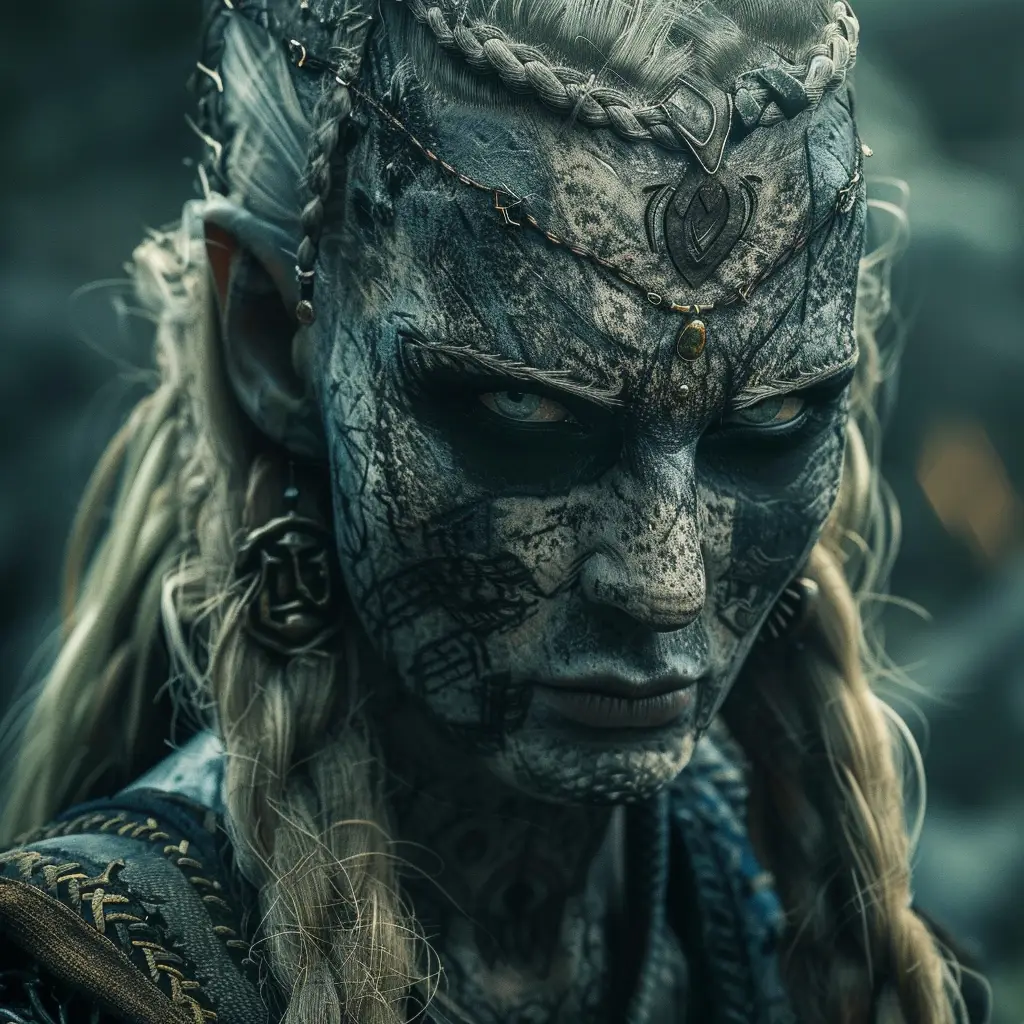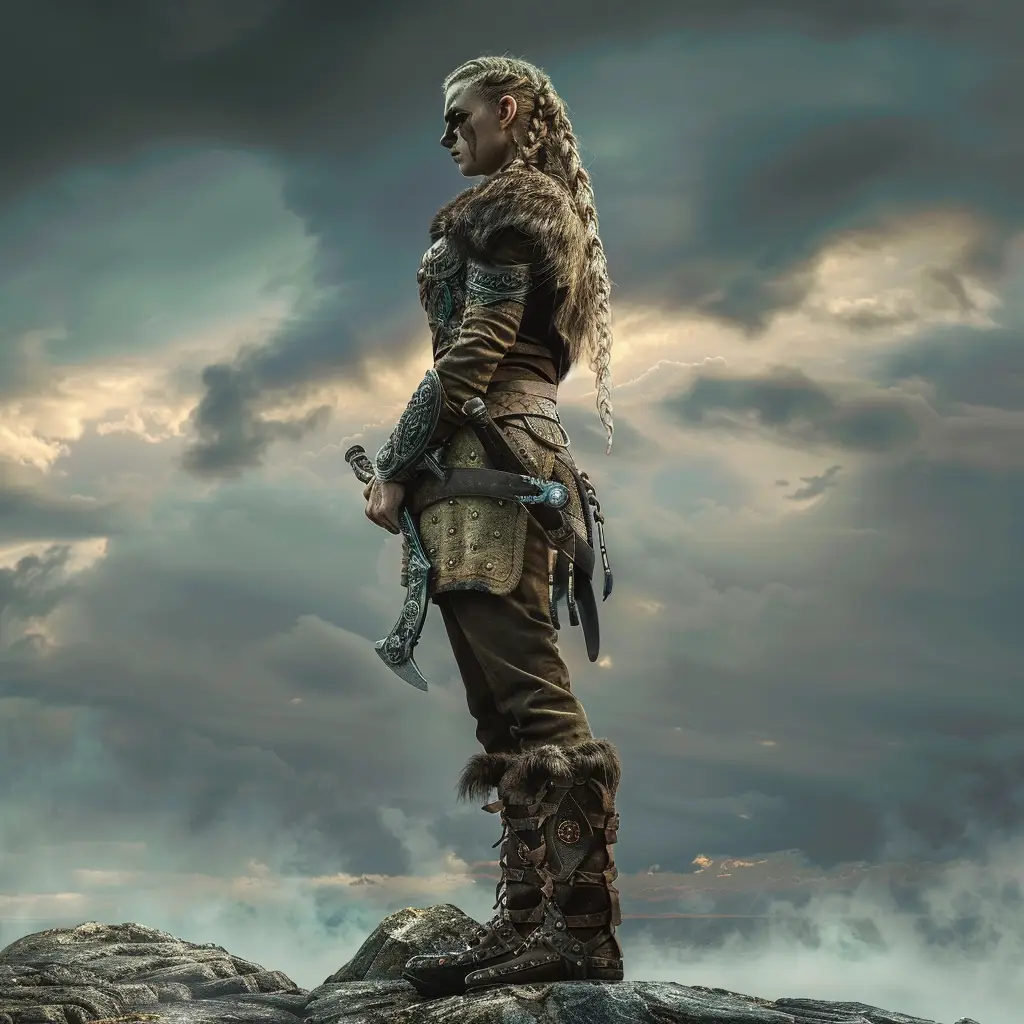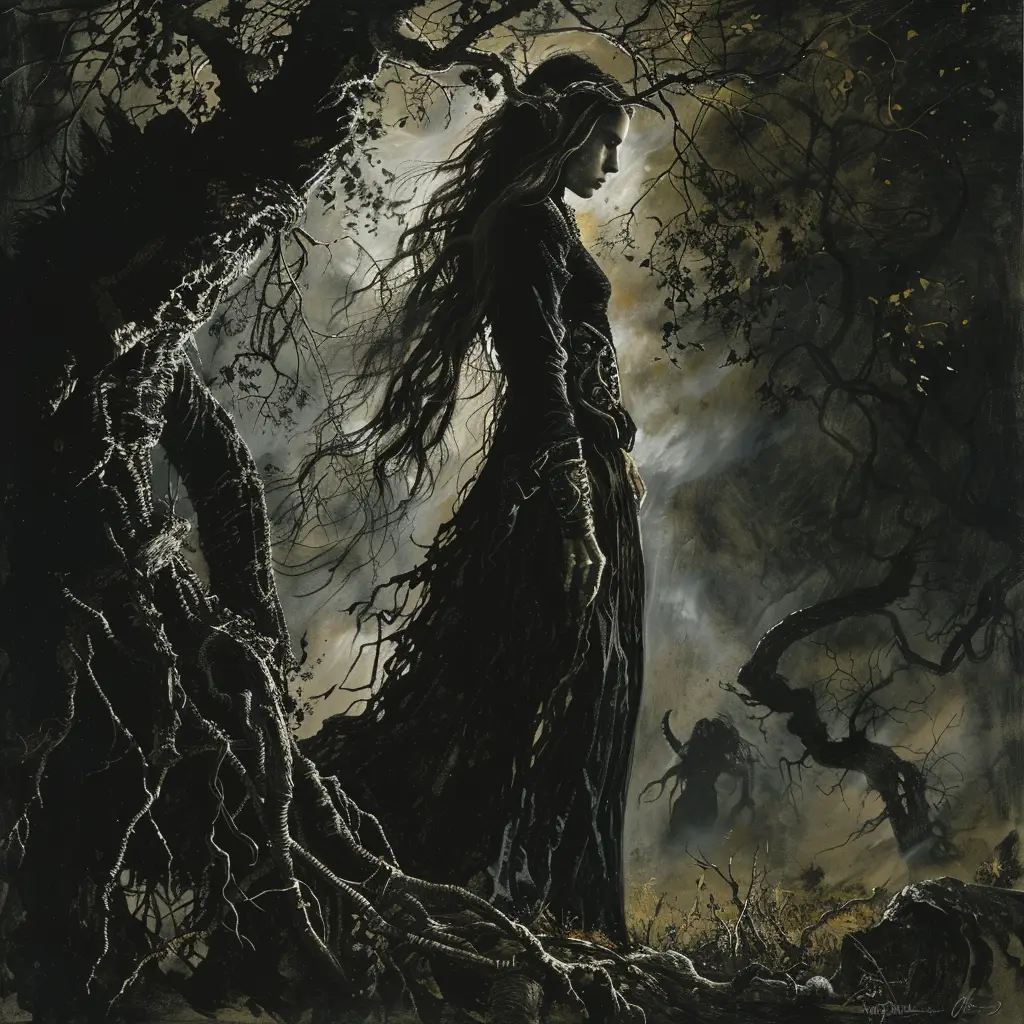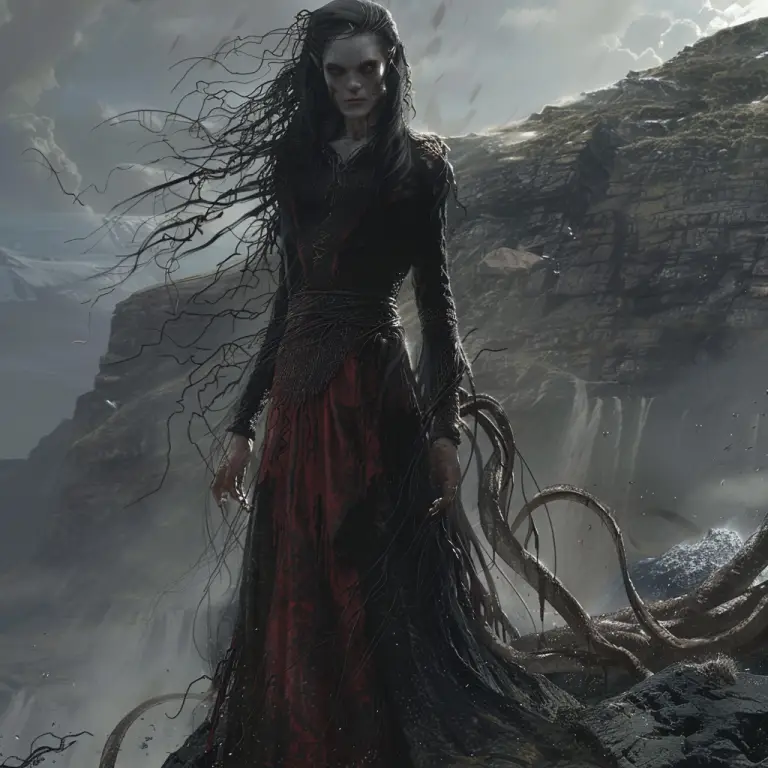Angrboða is a significant figure in Norse mythology, often described as a giantess and the mother of some of the most fearsome creatures in the mythological cosmos. Her role and characteristics contribute to Norse myth and emphasize themes of chaos, destiny, and the interplay between gods and giants.
Origins and Name
Meaning of the Name: Angrboða’s name translates to “the one who brings grief” or “she who offers sorrow.” This name is fitting given her role in bearing children who are destined to bring great trouble and ultimately play pivotal roles in the events leading to Ragnarök, the end of the world.
Jötunheim: Angrboða is a giantess, or jötunn, from Jötunheim, the land of the giants. Giants in Norse mythology often represent primordial chaos and are typically in opposition to the gods (the Aesir and Vanir), embodying the untamed forces of nature.
Family
Union with Loki: Angrboða is most famously known for her relationship with Loki, the trickster god. Together, they had three offspring who each played crucial roles in Norse myths:
Fenrir: The giant wolf who is prophesied to kill Odin during Ragnarök.
Jörmungandr: The Midgard Serpent, which encircles the world and is destined to fight Thor during Ragnarök.
Hel: The goddess of the underworld who rules over the dead who did not die in battle.
Significance of Her Children: The children of Angrboða and Loki are central to the myths surrounding Ragnarök, symbolizing the forces of chaos that will eventually challenge and bring about the downfall of the gods. Their existence underscores the themes of destiny and inevitable destruction in Norse mythology.
Role in Norse Mythology
The Prophecy: Angrboða’s offspring were prophesied to bring great calamity to the gods. To prevent this, the gods took drastic measures:
Fenrir was bound by the magical ribbon Gleipnir.
Jörmungandr was cast into the sea, where he grew to encircle Midgard.
Hel was sent to rule over the realm of the dead.
The Aesir’s Reaction: The gods’ response to Angrboða’s children reflects their fear of the chaos that the giants represent. Despite their attempts to control and confine these forces, the prophecies ensure that these efforts are ultimately in vain, as the foretold events of Ragnarök are inevitable.
Angrboða’s Ambiguity: While Angrboða herself is not as prominently featured in the surviving myths as her children or partner Loki, her presence looms large as the originator of these forces of chaos. She embodies the archetypal giantess whose very existence challenges the order established by the gods.
Symbolism and Interpretation
Mother of Chaos: Angrboða’s role as the mother of beings who are integral to the downfall of the gods places her as a symbol of chaos and the disruptive forces of nature. Her children, each representing different aspects of the world (the earth, the sea, and the underworld), highlight the interconnectedness of all things and the inevitability of change.
Feminine Power: In the context of Norse mythology, Angrboða can be seen as a powerful female figure whose role extends beyond mere motherhood. She is an embodiment of the untamed and often destructive aspects of nature, contrasting with the more orderly and controlled powers of the gods.
Intersection with Loki: Her union with Loki, another figure of chaos and transformation, reinforces the theme of unpredictability and the complex relationships between order and disorder. Together, they produce offspring that challenge the established order and catalyse significant mythological events.
Angrboða in Modern Culture
Literature and Media:
Angrboða has been reinterpreted in modern literature and media, often portrayed as a powerful and enigmatic figure.
In contemporary retellings, she is sometimes given a more expanded role, exploring her character and motivations beyond her function as the mother of monstrous beings.
Popular Culture:
Angrboða appears in various modern works, including novels, video games, and comics. For example, she features in Rick Riordan’s “Magnus Chase and the Gods of Asgard” series as a significant character with her own motivations and backstory.
She also appears in video games such as “God of War: Ragnarök,” where her character is reimagined and given depth and personality.
Symbolic Influence:
Angrboða continues to be a symbol of the wild, untamed aspects of nature and the inevitability of change. Her story resonates with themes of motherhood, the power of the feminine, and the cyclical nature of destruction and rebirth.
Angrboða is a key figure in Norse mythology, embodying the themes of chaos, prophecy, and the inevitable destruction that leads to rebirth. As the mother of some of the most significant and fearsome entities in the Norse pantheon, her legacy underscores the complex interplay between the forces of order represented by the gods and the chaotic powers of the giants. Her presence in the myths, while often indirect, is crucial to understanding the dynamics of Norse cosmology and the role of giants as both adversaries and essential elements of the mythological world.



